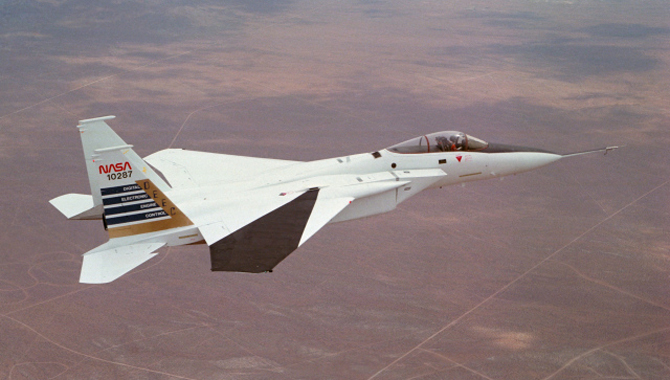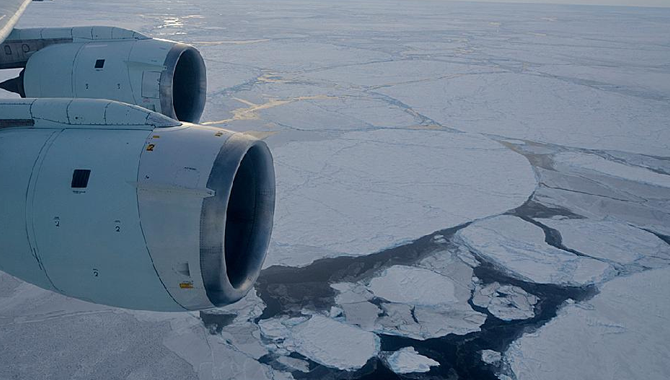
Ten years ago this month, NASA concluded the Digital Electronic Engine Control research program, which made significant contributions to aircraft engine performance.
In June 1981, NASA’s Dryden Flight Research Center, in collaboration with Pratt and Whitney, the U.S. Air Force, and NASA’s Lewis Research Center (now Glenn Research Center), initiated a research program on a commercially developed system called Digital Electronic Engine Control (DEEC). The DEEC system was initially applied to Pratt and Whitney’s F100 turbofan engine in order to transition F-15 aircraft from hydro mechanical propulsion control to digital.
The DEEC system has its roots in an earlier Dryden-developed integrated flight and engine control system that was designed to improve performance of the YF-12C Blackbird. Developed in the 1970s, the plane was used for high speed and high altitude aeronautical research that contributed to the development of the SR-71 Blackbird fleet. The success of the system with the Blackbird aircraft inspired Pratt and Whitney to develop a production-quality DEEC system for F-15 and F-16 aircraft.
View the slideshow on APPEL’s Flickr page.
The DEEC research program emerged during the last half of Dryden’s F-8 Digital Fly-by-Wire research program, which ran from May 25, 1972 through December 16, 1985. Digital Fly-By-Wire replaced the bulky cables, pushrods, and hydraulics of aircraft with wires containing control sensors and computers to manage control surfaces of the aircraft. The result improved fuel efficiency and reliability, and consequently decreased cost. DEEC and a follow-on research program called the Highly Integrated Digital Control System (HIDEC), of which the DEEC system was a component, “did for engine controls what the F-8 project did for flight controls.”1
The program demonstrated dramatic savings in operations and maintenance. The system allowed for faster throttle responses, improved air-start capability (or the engine’s ability to start mid-air), an altitude increase of over 10,000 feet in afterburner operations, and the ability to provide stall-free operations throughout the aircraft’s flight envelope.
While initially developed for the F100 engine, DEEC was later incorporated into the F100-PW-220 and F100-PW-229 engines, which power F-15 and F-16 aircraft. The DEEC system was also incorporated into the 757 commercial jetliners’ PW2037 engine.
The program concluded in February 1983, one-and-a-half years ahead of schedule.
1 Computers Take Flight: A History of NASA’s Pioneering Digital Fly-By-Wire Project, James E. Tomayko. Accessed February 19, 2013. https://www.nasa.gov/centers/dryden/pdf/182985main_DFBW_rev1.pdf
Read Computers Take Flight: A History of NASA’s Pioneering Digital Fly-By-Wire Project.
Digital Electronic Engine Control F-15A #287 in flight over California City, CA. Note wing deflection measurement system on right wing.
Featured Photo Credit: NASA









